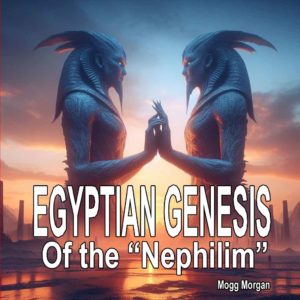
Tag Archives: Mogg Morgan
Egyptian Magick

A Spirited Guide
ISBN 9781906958992. 432pp
£20.00+p&p /$26.00+p&p, softcover
USA, Australia Buy Now
UK & Europe Softcover Buy Now
Elsewhere, check for shipping cost
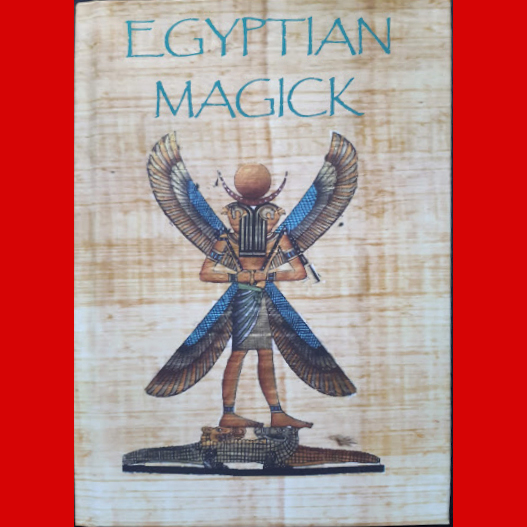
ISBN 9781914153006,
Altar edition, (jacketed case laminate)
available
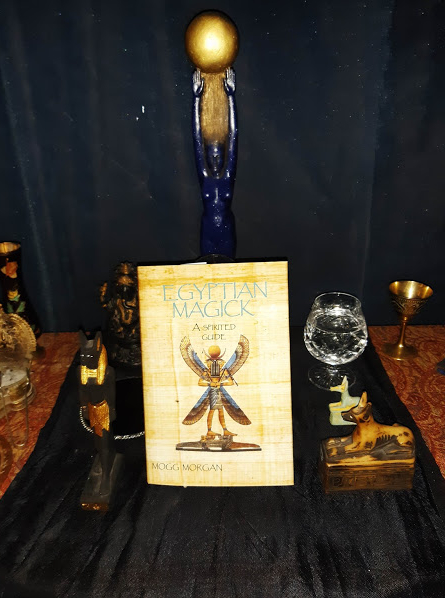
£30.00+p&p / $35.00+p&p
USA & Australia Buy Now
UK & Europe Buy Now
Elsewhere, check for shipping costs
“Within its own ‘world view’ Egyptian Heka was of far more exalted significance than its Coptic descendant or Western approximation.”
Robert Ritner, The Mechanics of Ancient Egyptian Magical Practice 247
Western magick is no longer an approximation; through practice and study it has recovered its memory. This magick is “Amoral and quintessentially effective” or to use the Egyptian term, it is called Akh, an effective or cunning power. This is a power to which gods, men, and all nature are subject. It was still the same force “whether used by god, king, priest, private individual, rebel or foreign enemy, whether hostile or beneficent, sanctioned or suppressed.” Does this mean that one can use magick for bad things with impunity? Absolutely not, for one is punished for what one does rather for the means one used, which are just the natural laws of the universe. Ultimately all this magick is theurgy, literally the work of the gods. Ideally, this becomes part of a practical theology by which the practitioner becomes, through “dynamic resonance” the image of the gods or divine forces he or she emulates. Thus the ultimate aim of the magician is knowledge and transcendence.
So here is an authoritative guide aimed at those who actually want to practice this magick. The scholarly reader may also find the experimental theurgy a useful perspective. Essentially a compilation, bringing together with some revision, all of the material and core ideas on the Egyptian magical religion from previous books, presenting them here as a complete working system. Topics including openings, initiations, imaginal realms, basic techniques and applications through a ritual year of the gods.
Seth & The Two Ways
Featured
Ways of seeing the demon god of Egypt
Mogg Morgan
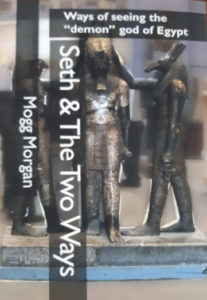
Seth & The Two Ways
Ways of seeing the demon god of Egypt
Mogg Morgan
Format: Softcover/illustrated/many in colour.
ISBN: 9781906958831
£18/US$26
Subjects: Ancient Egypt/Egyptian Magick
Click HERE for Seth & The Two Ways / UK / £18
Isis
Featured
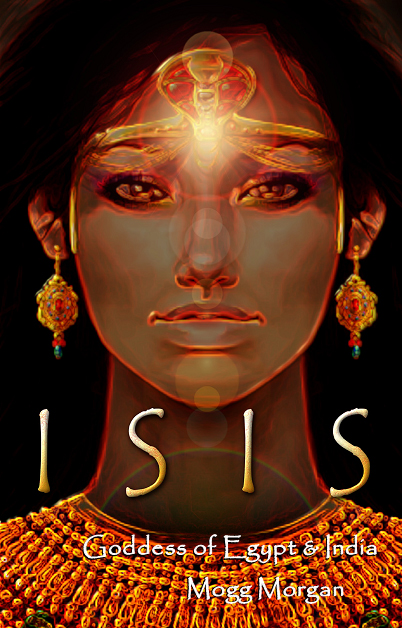
Isis, Goddess of Egypt & India
Mogg Morgan
ISBN: 978-1-906958-71-8,
£17.00/$26.00
– A Temple of Isis in India –
On India’s, south-western or Malabar coast is situated an ancient Hindu temple which is these days devoted to the famous Hindu god Shiva and his consort the fearsome goddess Kali. This is Kurumbha-Bhagavathy Devi outside of the modern city of Cochin or Kochi in Kerala state.
Travel back in time and the temple housed other gods. Once it was the home of the Buddhist/Jaina goddess Pattini whose mortal husband was tried and killed in a series of brutal events still commemorated in the temple’s ritual year. Before this and the story gets even stranger, as there are said to be remains of a secret, underground shrine, the home to a mystery cult dedicated to the Egyptian goddess Isis.
At the time of Christ, there was indeed a Greco-Roman merchant colony based in this part of India. Greek, Roman & Near Eastern merchants travelled to India after a regular, if epic, sea journey of two thousand miles across the Arabian Ocean, making their first landfall at a port known in the ancient world as Musiris. Clues to the religious practices of these ancient traders is evident not just in the surviving architecture but in very many, sometimes unique features of the later cults, continuing into the modern-day.
Some of the best examples come from the rites of Pattini as once practised at Kurumba-Bhagavathy Devi. Experts have often identified the story of her husband’s death and resurrection, as something of the Near Eastern cult of Attis. But a more recent and credible theory is that the temple once hosted the mysteries of the cult of Isis, whose husband Osiris was also cruelly cut down but then resurrected by her magical prowess.
So without more ado let me tell the whole story from its beginnings on the banks of the Nile. The story of Isis and Osiris is the basis of Egypt’s most popular religion. In what follows I trace the origins of this to Egypt’s pyramid age in the middle of the second millennia BCE. Arguably it is even older. A great deal of this books is devoted to describing what is known about the cult of Isis and Osiris from Egyptian records. This, I shall argue, is the basis for what comes later in the timeline, when the world was dominated by the Greek and Roman Empires. Isis and Osiris became the focus of global religion and the basis of the most popular of all classical mystery cults. This is precisely the time at which a small, Near Eastern shrine was built in South-West India to service the needs of the merchant trading post. Mysteries of Isis were popular among all social classes in the ancient world, especially mariners.
In India, we have a building which could itself be thought of as storing the memory of influences from each new wave of belief. We can follow the progress and transformation of its changing occupants, as each absorbs some of the archaeological memory. Finally, we arrive at its current incarnation and the celebration of the Bharani festival, which marks the beginning of the hot summer before the coming of the Monsoon rains. Many non-orthodox rites will enliven the tale. The mysterious society of Atikals returns to their lost temple every year to conduct secret rites culminating in twelve hours of ‘Misrule’, during which hundreds of thousands of devotees appear from all over Kerala.
There are other devotees who carry sticks, which they swirl in their dancing; others brandish the sickle sword. Most of these pilgrims are non-Brahmin ritual specialists such as the Veliccappadu. Their name means “a channel who sheds light” for they are spirit mediums, men and women, followers of Kali who utter oracles when in trance. They dress in red and wear heavy anklets and bells.
In the final part of my story, I present a complete and ‘lost’ version of the most famous drama of all time, the celebrated myth of passion play of Isis and murdered husband Osiris, clearly recognizable even in its current idiom based as it is in South Asian ritual drama. The drama is reproduced in its entirety as it reveals many previously unknown aspects of one of the world’s oldest myths.
The Ritual Year in Ancient Egypt
Featured
Lunar & Solar Calendars and Liturgy
Mogg Morgan
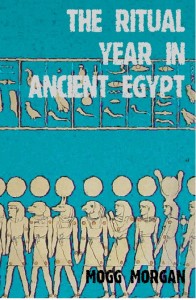
The Ritual Year in Ancient Egypt
Lunar and Solar
Calendars and Liturgy
Mogg Morgan
ISBN: 9781906958138 (2011) 272pp
£15.00 / US$24.00
Subjects: Ancient Egypt/Egyptian Magick
Click Here For / USA
Click Here For / UK
Click here for Kindle UK edition
Click here for Kindle USA edition
The very oldest Egyptian ritual calendar was lunar. The evidence for this is very complex and in the words of Professor Leo Depuydt, “does not exactly jump out at you!” This ancient lunar calendar continued a veiled existence alongside the dominant solar or civil year. Many details are lost so the project of this book is to bring together what has survived. Revealed here is a very ancient pantheon of gods, including Set, Min, & Hathor, one for each month of the lunar year. I have provided for them a unique collection of liturgy, rituals and prayers as may have been offered in the homes, sanctuaries and temples of original Egypt.
Many of these feasts of Ancient Egypt were celebrated on the phases of the moon – principally when it was new or full. So whatever your favorite god or goddess, make offerings on either of these days and you will be reviving an old and authentic form of the Ancient Egyptian magical religion.To complete the picture I present over several chapters all the technical details of the lunar month as well as its more well known civil replacement. Here you will find information on how certain key days were calculated when needed. These later chapters also provide related material on the mysteries of the Northern Constellations.
Finally, there are descriptions of the thirty lunar days of each month and lunar omens. So in total, this is the most complete and authoritative guide to the ritual wheel of the year at all stages of its use in the Ancient Egyptian magical religion.
Desert Fox Oracle

“The desert is so vast it can only be painted in miniature”
– Brion Gysin
The Desert Fox Oracle contains 30 cards. This number mirrors the number of days in the ancient Egyptian lunar calendar. The desert represents different things to different people. For example it can be the ultimate wilderness, the place of initiation and of the unconscious. The fox is the master of the desert and all its mysteries, he leads us on a journey through various archetypal images through which we can gain true knowledge of hidden things.
Buy UK Edition (£12.99)
Phi-Neter
Featured
Power of The Egyptian Gods
Mogg Morgan
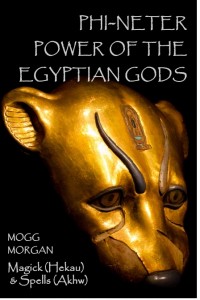
Phi-Neter
The Power of The Egyptian Gods
Mogg Morgan
Format: Softcover/228 pp.
ISBN: 978-1-906958-56-5
£15.00 / US $24.00
Subjects: Egyptian Magick
——————————————————————-
Phi-Neter, means ‘Power of the Gods’. In hieroglyphs this is represented by the hind-quarters of a leopard, a “Typhonian” creature, a predator who exemplifies the driving force of magick. In this book the author extends the core working material of Egyptian magick for himself and others to study and use. These techniques are manifest in the cult of Lord Seth – known as Typhon by the Greeks – and by all the other Gods of the Egyptian pantheon.
The Egyptian magician wields a power that was ultimately created by the Gods for the use of anyone who wishes to do their work. It is the same underlying power whether manipulated by Gods, priests, aristocrats, the common people or even the criminal. Same power, different ends.
“Ancient Egypt is an intellectual and spiritual world that is linked to our own by numerous strands of tradition.” – Jan Assmann, The Mind of Egypt
topics include: the false door; temple; Abramelin; magick squares; Aleister Crowley; the heptagram; vowel song; cardinality; twilight language; seven charaktêres for “deliverance”; ring of power; hermeticism; colour symbolism; number; egyptian “kabbalah”; hermeneia; the Star Goddess; the Book of Nuit; ephemeris of Egyptian decans; Books of the Nightworld (duat); Book of Gates; Egyptian liturgy; a Greco-Egyptian dice oracle; Short Invocations, prayers, valedictions, maledictions etc
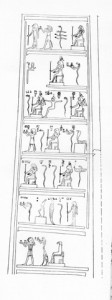
TANTRA SADHANA
A practical introduction to Kaula Magick
Mogg Morgan (Sahajanath)
(AMOOKOS)

Tantra Sadhana
A practical introduction to Kaula Magick
Mogg Morgan (Sahajanath)
(AMOOKOS)
Format: Softcover
ISBN: 978-1869928-421
£15.00 / US $24.00 180pp
Subjects: Tantra/Amookos
Click Here for Tantra Sadhana /USA
Click Here for Tantra Sadhana / UK
Click Here for the Kindle Edition / USA
Click Here for the Kindle Edition / UK
A ‘Sâdhana’ is an instrument that leads to a particular goal. In Tantra, it is a technical term denoting worship or spiritual practice.
Tantra Sâdhana is a collection of related instructional papers designed to aid the aspirant through a foundation practice.
The work was originally conceived as leading to a practice over the course of one lunar month. In addition, the author had added several useful appendices – including the previously unpublished Tantrik Knuckle Bone Oracle.
The reader might find this a good general primer combined with some more unusual, perhaps advanced material.
Contents:
Introduction / / What is Tantra? / Sâdhana/practice / Mantra / Mandala or Yantra / MudrA / NyAsa / DhyAna / PUja / DIkshA / Magick and Liberation / Svecchacara / Tantrik traditions and sects / Recommended Reading / The opening rite / Yoga of the voice / Quarter Guardians / Visualisation / The Astral Temple / The Kamarupa Temple Meditation / The Kalas / The Ganesha Practice (Sadhana) / Ganesha rupa / The ‘Demon’ Doctrine and the roots of Tantra / Invocation of Kundalini / IV The Serpent Power /The Kaulajnana -Nirnaya of the School of Matsyendranath / Yoga Sutras of Patanjali / Grammar of Tantra / The VAma-keshvari-matam / Oracles / Tantrik Knuckle Bone Oracles / Pronounciation / When Your Guru Goes Gaga / Hindu Lunar Calendar
Review from White Dragon
“I first became interested in Tantra years ago when I read AGHORA, At the Left Hand of God by Robert E. Svoboda. The ideas of breaking out of social conditioning, becoming yourself, all appealed to me. Since then though my interest waned due to the New Age inundation of, ‘tantra for lovers’ type waffle.
Then comes Tantra Sadhana for me to review and I once again find myself inspired. This e-book takes the form of an introduction to the subject and then gives the reader some basic ritual to work through. First published as a fact-sheet for AMOOKOS, Arcane and Magickal Order of the Knights of Shamballa, so you know the information in chapter one is solid enough.
The inclusion of the Gnostic Pentagram Ritual was not to my taste, It’s a personal thing, but I would rather the author had used the version from the PGM, from which the GPR is a more rubbish version. I know why it’s there, but it didn’t work for me.
What I did find very useful was the extensive appendix, for me, this is the best part of the book, and with a little imagination can be used to form your own Tantric rites. I was very pleased to see the Ganapati Upanishad text included, I was at a private ritual years ago where Phil Hine did this and I found it very moving.
Anyone interested in Tantra beyond the New Age tripe will enjoy this book and I would recommend it without reservation. I would also say it’s worth reading for people interested in Chaos Magick, because reading it, it becomes obvious how Tantric ideas have shaped the Chaos Current that we have today. ”
Pan’s Road
An Ancient Egyptian Adventure
Mogg Morgan
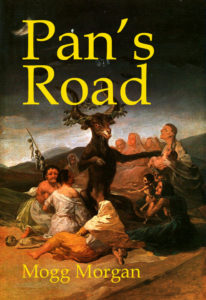
Pan’s Road
(Fiction complement to The Bull of Ombos)
Mogg Morgan
Format: Softcover
ISBN: 1869928-89x
£9.99/US$20, 234 pp
Subjects: Occult Fiction/Egyptian Magick/Ancient Egypt.
Click Here for Pan’s Road / USA
Click Here for Pan’s Road / UK
Click Here for Kindle edition / USA
Click Here for Kindle edition / UK
–
Aleister Crowley,
Thelemic Magick
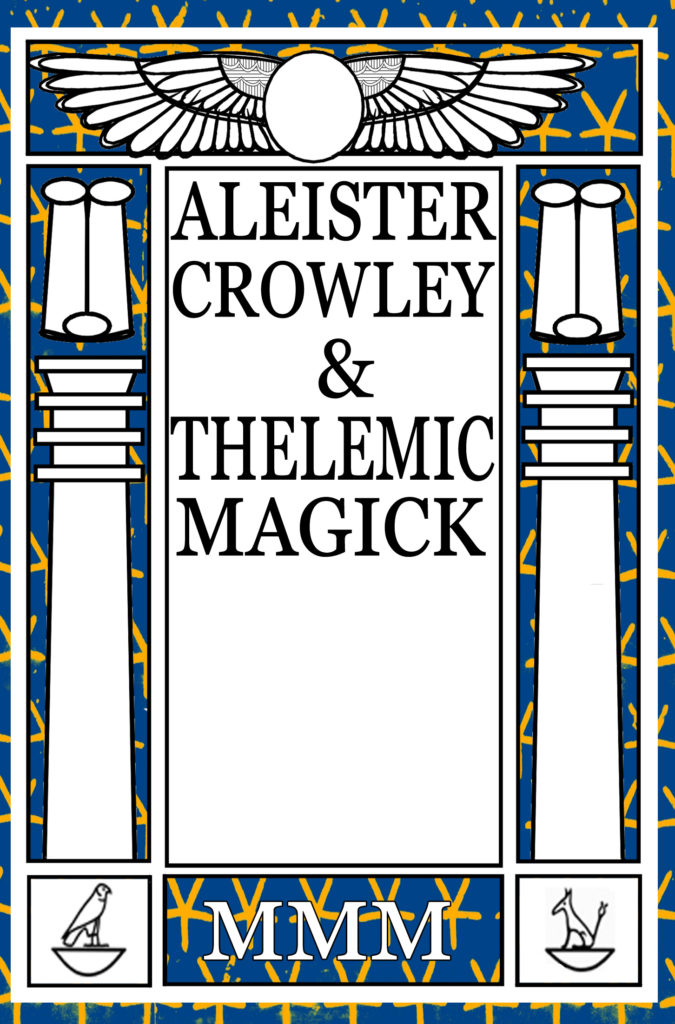
Revised Edition
12 October 2022
(was Proceedings of the Oxford Golden Dawn Occult Society Thelemic Symposium)
Mogg Morgan
Format: Softcover
ISBN: 186992844X
£15.00/US$22.00
Subjects: Aleister Crowley & Thelema/Magick/Enochian Magick.
Hell of a Guru
Do what thou wilt shall be the whole of the law
Aleister Crowley may have died in 1947, but his influence is still very much felt by the magician of the new aeon. The CD soundtrack The Beast Speaks sold 8000 copies since its release in 1993, and the paperback edition of Crowley’s Confessions was number two in Virgin Megastores top ten books. The modern magician is no slavish follower or member of some mind bending cult. Crowley’s watch word was Thelema (The Crowleian pronunciation is Theh-LEE-mah, the accent being on the vowel of the second syllable, Greek speakers say the accent should be on the vowel of the first syllable for it to be pronounced right….ThEH-lee-mah) – which means [free] Will. Those who choose to follow this magical path aim to de-condition themselves, to develop independence of spirit and ultimately to become their very own self. One of the many attractions of Crowley’s type of magick, was this advice to follow one’s own way and create your own life path. You don’t need a priest or a judge to tell you how to act – work it out for yourself.
As part of the process of developing self-knowledge, Crowley advocated the practice of magick. This he defined as ‘the science and art of causing change in conformity with will.’
Thelemic magick can be either a system or an approach to the magick of any tradition, e.g. Hermetic, Ceremonial, even Witchcraft. In Thelema, as in all other styles of magick, there are at least two different types of magical entity – the ‘Masonic’ and the ‘Rosicrucian’. The Masonic tends to be organized into definite hierarchical orders; whereas the Rosicrucian is more freeform, often a mere network of peers. The authors of what follows reflect many of these different styles of Thelemic magick and reading what they say is perhaps the best way to grasp what Thelemic magick is all about.
As part of the process of developing self knowledge, Crowley advocated the practice of Magick. This he defined as ‘the science and art of causing change in conformity with will.’ The history of magick is the history of human beings. Many of the things that are now labelled ‘culture’ began as experiments in ritual and magick viz. drama, music, art, dance, philosophy and poetry etc., etc. Magick has played a role in many key moments of our history, for example during the fourteenth century, it was the philosophy of the Renaissance. In our own time, many modern art movements have been driven by magical ideas, for instance, the first abstract painting was made by the Theosophist Kandinsky. Magick is a valuable and reputable activity to undertake.
Bull of Ombos
Set and Egyptian Magick II
Mogg Morgan
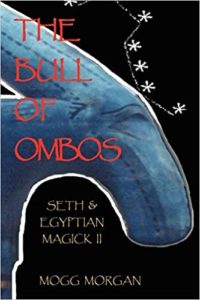
The Bull of Ombos
Set & Egyptian Magick II
Mogg Morgan
Format: Softcover
ISBN: 9781869928872 (2005) 360pp
£15.00 / US$24.00
Subjects: Egyptian Magick.
Click Here For The Bull of Ombos / USA
Click Here For The Bull of Ombos / UK
Click Here for Kindle edition / USA
Click Here for Kindle edition / UK
Naqada is a sleepy little town in Upper Egypt, that gives its name to a crucial period in the prehistory of Egypt. In 1895, William Matthew Flinders Petrie, the ‘father’ of Egyptian archaeology, stumbled upon a necropolis, belonging to a very ancient city of several thousand inhabitants. With Petrie’s usual luck, he’d made yet another archaeological find of seismic proportions – not just an ancient city a quarter the size of Ur in Mesopotamia, a rare enough find, but the capital of the earliest state established in Egypt! Petrie’s fateful walk through the desert led him to a lost city, known to the Greeks as Ombos, the Citadel of Seth. Seth, the Hidden God, once ruled in this ancient place before it was abandoned to the sands of the desert. All this forbidden knowledge was quickly reburied in academic libraries, where its stunning magical secrets had lain, largely unrevealed, for more than a century – until now.
This book is for all Egyptophiles as well as anyone with an interest in the archaic roots of magick and the sabbatic craft.
Contents: Gold in the desert / Sethians and Osirians compared / Cannibalism /Temple of Seth / Seth’s Town / Seth as Bull of Ombos / Hathor / The names of Seth / Animals of Seth / Seth – the red ochre god / Seth and Horus / Opening the mouth / Seven / The Boat / Heka & Hekau / Magical activities / Cakes of Light / Magick as use and misuse of the funeral rite / Re-emergence of the Hidden God / Five useful Appendices / Extended bibliography /Glossary
—–
Reviews
“The Bull of Ombos is an important and ground-breaking work. The figure of Set(h) has been of significance within Western magic for quite some time, even if he (it?) has appeared as the more controversial form of Satan. While the Temple of Set and The Storm have pioneered research into Sethian magick, the works of Mogg Morgan stand alone as major contributions to this field. What I find most unique is that they combine the fastidiousness of an Egyptologist with the experience of a modern occultist. Certainly Morgan knows his stuff, from Tantra to the modern O.T.O. from pagan and Left Hand Path magick to the Golden Dawn and traditional folklore and customs, but at the same time he approaches the subject cautiously and with the skills of a scholar even a folklorist.
What he offers in this work is what could be best described as a reconstruction of pre-dynastic Egyptian Sethian beliefs and practices . . . While Petrie’s discovery was of great significance he really didn’t appreciate nor understand it. Due to the unique practices of the “Sethians” he came to conclude they weren’t even Egyptians and hence saw them as some sort of foreign invaders. Due to this and the general ambivalence of Egyptologists to the figure of Seth, Petrie’s work in this field has remained largely untapped by later Egyptologists.
Morgan appreciating the significance of this unique resource with the eyes of a scholar as well as a magician has given us a glimpse of what the worshippers of Seth may have believed and praised. Moreover he shows the significance of these within a modern occult system, in his early work Tankhem: Seth & Egyptian Magick, he discussed how this system may have been originally Tantric in nature and its modern application. His research on the animals of Seth, images and names related to Seth, archaeological finds etc is extremely comprehensive and offers extensive clues which will take many years to fully explore and comprehend.
In Bull of Ombos: Seth and Egyptian Magick Voll II, he gives us quite an extensive intellectual framework for Sethian magick (including lots of source materials and some 78 illustrations) as well as giving us a means to bring the magick of Seth into our lives today. Living Traditions, Australia.
Recommended by The Cauldron #119
”I also want to personally thank you for your work . . . you have contributed to my practice and to my Coven’s rituals.’ – www.cotw.us, a teaching Coven, Denver, Colorado, USA.
Review in ASHÉ
“The publication of a book devoted to the Egyptian deity Seth (aka Set) is a rare enough event even in the rarified halls of academia. The publication of a modern magickal text focusing on Seth is even rarer. Despite the important role Seth played in the history of magick–his frequent appearances in the magical papyri of the Hermetic period–few modern texts have taken a serious look at the enigmatic god. This is not all too surprising, given the short-shrift and a good dose of bad PR both in antiquity and also in the Victorian mis-interpretations of the early Egyptologists. Two other modern texts come immediately to mind: Don Webb’s short treatise Seven Faces of Darkness and Mr. Morgan’s earlier work Tankhem. Mr. Morgan is an amateur Egyptologist who has long maintained and interest in the maligned figure of Seth. The Bull of Ombos begins with the 19th century discovery of an ancient city near Naqada, Egypt. The city proved to be the capital of the earliest Egyptian state. The lost city was known to the Greeks as Ombos, the Citadel of Seth. Once ruled by the Hidden God the site had been left to be swallowed by the sands of the desert–the image of the god transformed through later layers of Egyptian power and politics. As Mr. Morgan notes that most of the knowledge discovered at Ombos was quickly reburied in academic libraries. Bull of Ombos delves into these forbidden areas. Mr. Morgan painstakingly puts together the intricacies of early Sethian worship and the roll the god played in the Egyptians’ daily lives. He does not shy away from analyzing the more disturbing suggestions of previous archeological conclusions–even hints of cannibalism. From the scant clues available, the author has produced a detailed and intricate portrait of Seth that is at the same time very applicable to the modern Sethian. Mr. Morgan also provides retellings of the key Seth-related stories as appendix material–a welcome supplement to the text.”
Supernatural Assault in Ancient Egypt
(Also contains topics on Seth, Renpet & Moon Magick)
Mogg Morgan
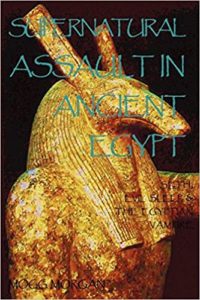
Supernatural Assault in Ancient Egypt
Seth, Renpet & Moon Magick
Mogg Morgan
Format: Softcover
ISBN: 978-1-906958-32-9 (2011) 190pp
£15.00/ US$24.00
Subjects: Egyptian Magick.
Dreams, the real theatre or perhaps battlefield of magick are influenced by cosmic tides that ebb and flow through us as they did the ancient Egyptians.
Contents: Kiss of the Vampire / Origin of the Vampire Myth / Egyptian Psychology / Lucky and Unlucky / Supernatural Assault/
Mogg Morgan

I work for innovative ‘new edge’ publisher Mandrake of Oxford, recently described as a ‘respected literary catalyst’, and responsible for the discovery of many new authors, including his friend and onetime mentor Jan Fries.
I regard myself as a practitioner-cum-scholar of all aspects of occultism. I was a Wellcome research student at Oxford, where my teacher was the late Professor B K Matilal, a widely respected expert on South Asian thought. Over the years I have been exploring the connections between the popular magick of ancient Egypt and its continuation/crossover with the living magical traditions of the middle East, and the Kaula/witchcraft of south Asia and beyond
I have a particular interest in divination, dream interpretation and oracles. I’ve experimented widely in using some ancient oracles to address modern queries. Consequently I do sometimes prepare “horoscopes” in the original and authentic Egyptian manner. I also use dice oracles based on Greco-Egyptian and Tantrik sources. I interpret dreams and other omens. My direct email (mandox2000[@]yahoo.com)
Books, Ebooks, Bonus Essays, Lectures, Misc
Isis, Goddess of Egypt & India, ISBN: 978-1-906958-71-8, £17.99/$25, (2016) 256pp
Tankhem: Seth & Egyptian Magick I, ISBN: 1869928865 (2005) 234pp
The Bull of Ombos: Set & Egyptian Magick II, ISBN: 9781869928872 (2005) 360pp
Supernatural Assault in Ancient Egypt: Seth, Renpet & Moon Magick, ISBN: 978-1-906958-32-9 (2011) 190pp
The Ritual Year in Ancient Egypt: Lunar and Solar Calendars and Liturgy, ISBN: 9781906958138 (2011) 272pp
Phi-Neter: The Power of The Egyptian Gods, ISBN: 978-1-906958-56-5. (2014) 228 pp.
Seth & The Two Ways: Ways of seeing the demon god of Egypt, ISBN: 9781906958831, (2019) 300pp
Also:
Tantra Sadhana: A practical introduction to Kaula Magick Mogg Morgan (Sahajanath) (AMOOKOS) ISBN: 978-1869928-421 (2008) 180pp
Ayurveda: Medicine of the Gods, Basic Principles of Ayurvedic Medicine,
ISBN: 1869928377 (2002, 2020) 148pp
Sexual Magick: Secrets of Sexual Gnosis in Western Magick, ISBN: 978-1-906958-48-0, (2012) 186pp
Fiction
Pan’s Road : An Ancient Egyptian Adventure,
ISBN: 1869928-89x, (2006) £9.99/US$20, 234 pp
The English Mahatma: An Indian Adventure
Isbn 1869928458 (2001) 186pp
Forthcoming
The Demonic Calendar of Ancient Egypt
Lectures & Podcasts (available for booking)
Discussion of Egyptian Magick Podcast (click on link)
Seething & Seidr (workshop)
Sexuality & Magick
Write & Find Ecstasy in writing: occult writing after the Witchcraft Act
Art & the Occult
Cult of the Hidden God
Egyptian Magick – General Introduction
Isis In India
Lunar Mysteries of Seth
Seth: personification of evil?
Abstract:
Contemporary magical practitioners have always been interested in the ‘problem of evil’ – the nature of good and bad action. Take for example Helena Blavatsky’s statement – ‘demon est deus inversus’ to be found in her highly influential and monument work ‘The Secret Doctrine’ (1888:1.411). This was later adopted by the poet W B Yeats as his magical motto in the Hermetic Order of the Golden Dawn. Most practitioners believe that the ancient Egyptian god Seth is the prototype for the contemporary archetype of Lucifer, Satan or the Devil. I want to take a brief look, in context, at the famous image of Seth deriding Apophis, (the demonic / chaotic serpent of ‘non-being’) as a leitmotiv for the nature or ‘personification’ of evil in ancient thought.
View a short film on Typhonian Magick:
Tankhem
Seth & Egyptian Magick I
Mogg Morgan
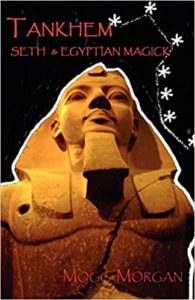
Tankhem
Seth & Egyptian Magick I
Mogg Morgan
Format: Softcover
ISBN: 1869928865 (2005) 234pp
£15.00 / US$24.00
Subjects: Egyptian Magick.
Click Here for Tankhem / USA
Click Here for Kindle edition / USA
Click Here for Tankhem / UK
Click Here for Kindle edition / UK
The Typhonian deity Seth was once worshipped in Ancient Egypt. Followers of later schools obliterated Seth’s monuments, demonised and neglected his cult. A possible starting point in the quest for the ‘hidden god’ is an examination of the life of Egyptian King Seti I (‘He of Seth’) also known as Sethos.
When looking for an astral temple that included all of the ancient Egyptian gods and goddesses, the temple of Seti I proved itself worthy of examination. Many secrets began to reveal themselves. The essence of the real philosophy of the Sethian and indeed what Satanism is, stems from the author’s astral wanderings in this temple.
The temple is a real place, and like any temple no part of its design is accidental. It is a record in stone and paint of the Egyptian wisdom. It also fits quite well with the Thelemic mythos and tells lots of interesting things about the ancient Seth cult – if you have the eye to see it.
Contents:
Prolegomena to Egyptian magick;
Setanism;
Tankhem;
Egyptian Magick and Tantra;
Sexual Magick;
Twenty Eight;
The Crooked Wand.
—–
Recommended by The Cauldron
THE VOICE OF THE STORM
“Considering how few modern metaphysical books are devoted to Sethian magic specifically, Storm initiates and other Sethians may find Morgan’s contribution to be of interest. Morgan also includes material relevant to the sexual mysticism of the left-hand path tradition which is relevant to the Storm’s transmission of the sinister current. Morgan’s approach is not in accordance with the purely religious vision of Seth that inspires the Storm movement (he seems to see Seth as a sort of Jungian archetype rather than a literal deity). Although we disagree with his connection of Seth to Satanism and Thelema, and some of his research in the book is dated (circa 1980s), many of Morgan’s insights and research concerning the historical cult of Seth will be illuminating to any reader interested in the Sethian phenomenon.’
SILVERSTAR
“A very personal exploration of the cult of the dark Egyptian god Set or Seth, covering ancient temples, tantrik and Crowleyan influences, sexual magick, sacred landscapes and astronomy, thought-forms, and the unjustly neglected work of the poet W.B. Yeats, who is seldom recognized as one of the most important and active members of the Golden Dawn. Mr. Morgan is an excellent example of how ancient magick can work for the modern individual: in exploring the past, you may find myths that resonate for you, that come alive in dreams and omens, appearing in unexpected synchronicities as you go through life. The Old Gods are not dead, they think we are. Mr. Morgan has also written several other works, including the thought-provoking Sexual Magick under the nom-de-plume Katon Shual.”
